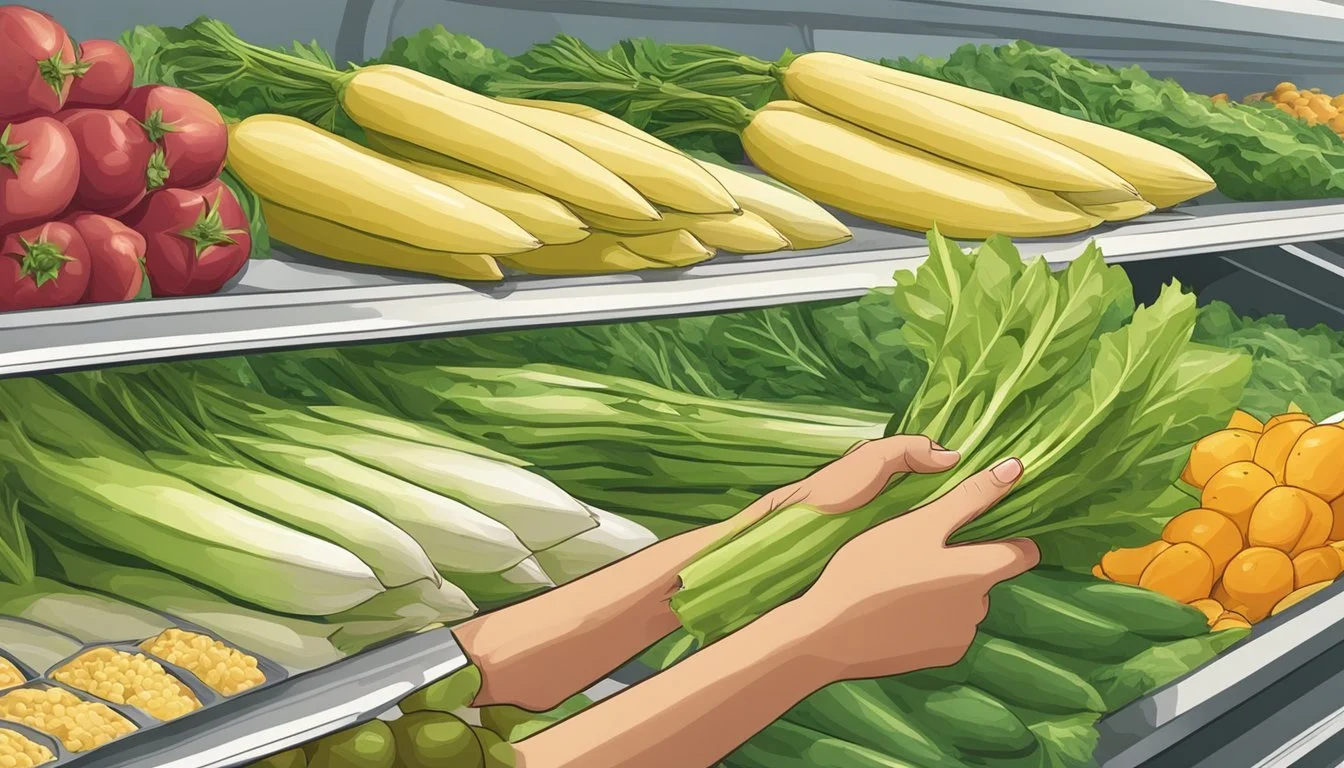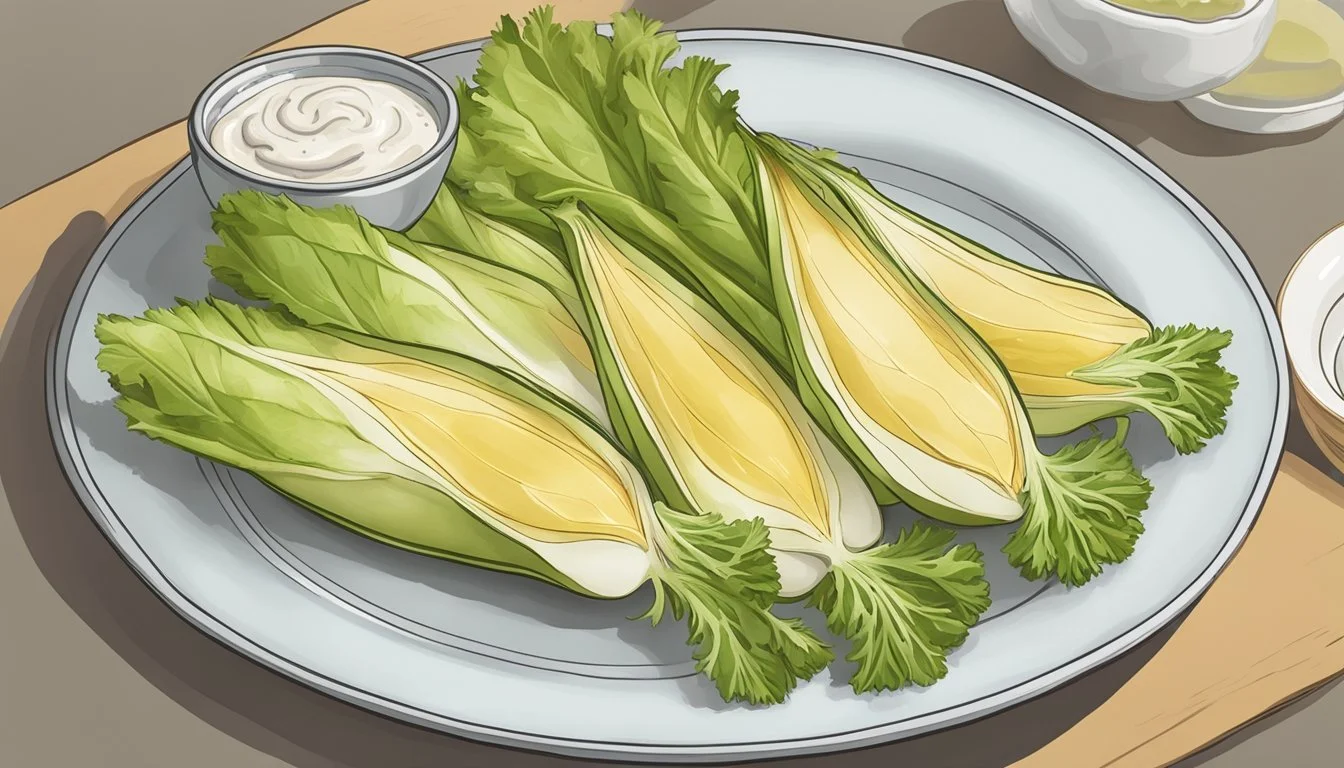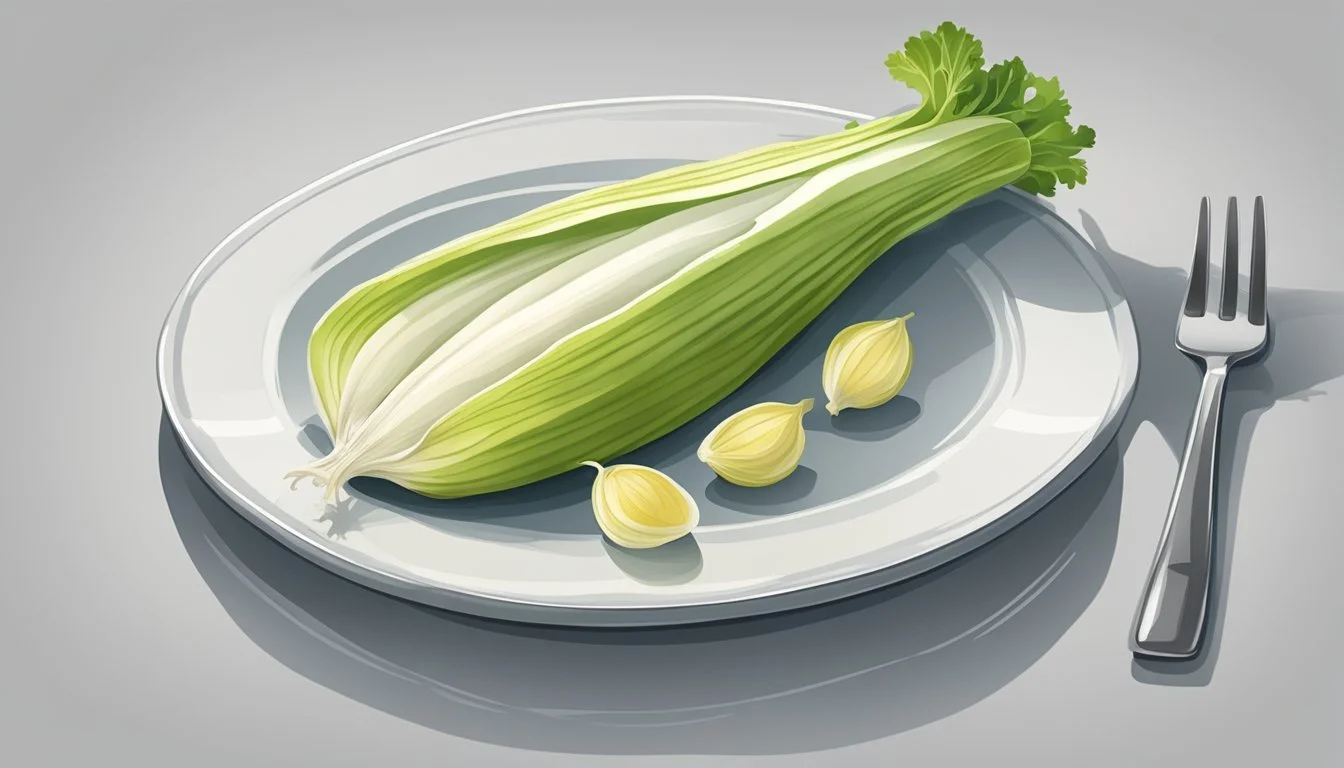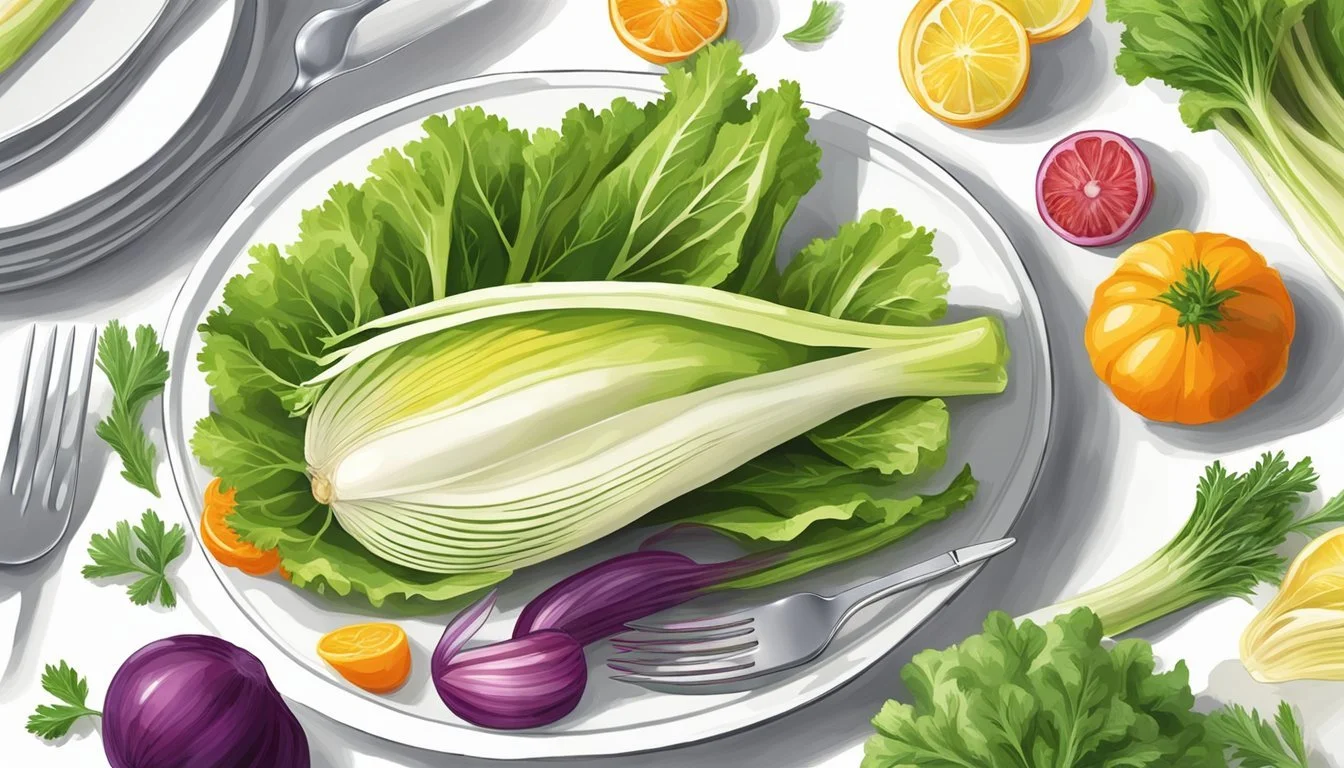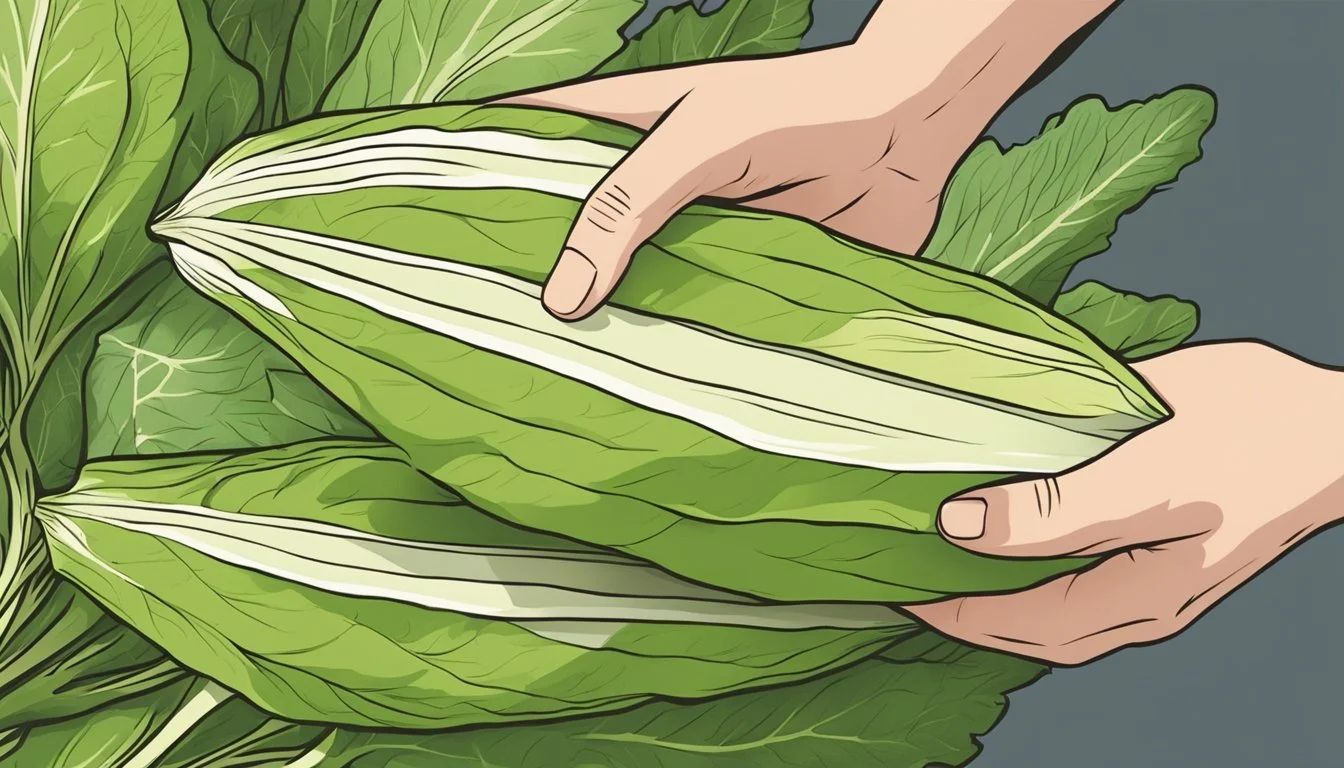How Do You Eat an Endive?
Mastering the Art of Enjoying this Chicory Vegetable
Endive is a distinctive leaf vegetable that belongs to the chicory family, featuring a crisp texture and a mildly bitter taste. It is recognizable by its elongated shape, with varieties ranging from the white and pale green Belgian endive to the reddish hues of the red endive. Endive can be used raw or cooked, making it a versatile ingredient for a variety of dishes.
When eaten raw, endive leaves serve as a crunchy addition to salads, bringing a refreshing bitterness that complements sweeter dressings or ingredients. Its firm leaves can also function as edible scoops for dips or as a base for small, flavorful appetizers (What wine goes well with appetizers?). The slight bitterness is often balanced with ingredients like fruits, nuts, and cheeses.
In cooking, endive can be braised, grilled, or baked, which mellows its bitterness and results in a tender, flavorful dish. When cooked, the endive's sturdy leaves hold up well, making it suitable to pair with a range of seasonings and toppings. Whether it's incorporated into a warm side dish or served as a unique vessel for savory fillings, endives offer both nutritional value and a pleasing aesthetic to elevate a meal.
Selecting Endives
When choosing endives at the grocery store, it's important to distinguish between the varieties available and to be able to identify freshness. Specific purchasing tips can guide consumers to the best quality for both taste and health benefits.
Varieties of Endives
Endives come in several varieties, each with unique characteristics:
Belgian Endive: This variety is oblong with white leaves and light green tips. It has a crunchy texture and a slightly bitter taste.
Curly Endive: Also known as frisée, it has frilly, green edges and a robust, bitter flavor.
Radicchio: Often confused with red endive due to its color, radicchio is a round leafy green with white veins and a spicy taste.
Red Endive: Similar in shape to the Belgian endive but with red-tinted leaves, offering a milder bitterness.
Purchasing Tips
Here are specific tips to ensure that you purchase high-quality endives:
Look for endives with crisp leaves that are tightly packed.
Avoid any with browning or wilting, as these are signs of age.
Size is an indicator of maturity; medium-sized endives are typically the best choice in terms of flavor and texture.
Identifying Freshness
Freshness is key for the best taste and nutritional value:
Fresh Belgian endive will have pale, almost white leaves, as it's grown without sunlight to prevent the development of chlorophyll.
Curly endive should be a lively green, without any yellowing.
A fresh red endive will exhibit vibrant red hues without signs of browning.
By focusing on these factors, consumers can select the best endives for their culinary needs.
Preparation Basics
Preparing an endive for consumption involves a few fundamental steps to ensure cleanliness and optimize its presentation and taste. The process includes washing and cleaning the leaves, applying proper cutting techniques, and removing the core and discardable parts.
Washing and Cleaning
Before utilizing endive in any dish, it's crucial to wash the leaves thoroughly. Start by separating the leaves from the root to ensure water can reach the entire surface area of each leaf. Gently rinse under cold water to remove any dirt or debris. For extra cleanliness, one can soak the leaves in a bowl of cold water for a couple of minutes. After washing, pat the leaves dry with a clean cloth or paper towel to prevent any water-induced wilting.
Cutting Techniques
There’s a specific approach when cutting endive to maintain its shape and texture. For salads, slicing the endive into strips is common. A cook can halve the endive lengthwise and then chop it crosswise into half-inch segments. For a finer shred, they can make additional lengthwise cuts before chopping. When prepping for cooking, the endive can be kept in halves or quarters depending on the recipe's requirement.
The Core and Discardables
The core of the endive is notably denser and more bitter than its leaves and often removed before eating. To discard, one should cut around the core at the base of the endive and remove it. It's important to note that the cut surfaces of endive can discolor rapidly. To prevent discoloration, it’s best to cut the endive immediately before use. If prepping endive in advance, a mitigative action would be to submerge the cut leaves in water mixed with a bit of lemon juice or vinegar until ready to serve.
Serving Endives Raw
Raw endives offer a crisp texture and a mildly bitter flavor that can enhance salads and serve as a unique base for appetizers. They are a versatile leafy vegetable that is often enjoyed for their crunchy bite and nutritional benefits.
Salad Creations
For a simple yet elegant salad, endive leaves can be used whole or chopped. They pair well with ingredients that contrast their slight bitterness:
Dressing: A vinaigrette made with extra-virgin olive oil complements the flavor of endives.
Cheese: Crumbled feta or goat cheese adds creaminess.
Nuts: Toasted walnuts or almonds provide a crunchy texture.
A basic recipe might include:
3-4 endives, separated into leaves
A dressing of choice, preferably with extra-virgin olive oil
Optional additions like cheese and nuts
Salt and pepper to taste
Appetizers and Snacks
Endives can act as a low-carb substitute for chips and crackers when serving dips. Its sturdy leaves are ideal for scooping up a variety of spreads. Suggestions for appetizers include:
Fill endive leaves with a mix of chopped herbs, cream cheese, and smoked salmon.
Combine finely diced fruits, such as apples or pears, with blue cheese for a filling.
To prepare as a snack:
Select firm, fresh endive leaves.
Rinse and pat dry.
Arrange on a platter with a bowl of dip, like hummus or a yogurt-based sauce.
Endive appetizers present a refreshingly crunchy alternative, suitable for any occasion, be it a casual gathering or a formal event.
Cooking Endive
Endives are versatile vegetables that can be prepared using various cooking methods including grilling, roasting, and braising. Each method brings out a unique flavor profile and texture from the endive.
Grilling Methods
Endives can be grilled to add a smoky flavor and a crisp texture. To grill an endive, one should preheat their grill to a high setting. Gas grills usually require about 10 minutes of preheating. For charcoal grills, one should start grilling once the charcoals have turned gray, indicating they are hot enough. Endives should be cut in half lengthwise and brushed with olive oil to prevent sticking. They can then be placed cut side down on the grill and cooked until charred lines appear, generally taking about 2 to 3 minutes per side.
Roasting Directions
Roasting endives in the oven emphasizes their natural sweetness and tenderizes the leaves. This method involves preheating the oven to 375 degrees Fahrenheit. The endives should be split in half and coated lightly with olive oil, salt, and pepper. They can be then placed in a baking dish and dotted with unsalted butter. To ensure even cooking, the endives are roasted for approximately 20 to 25 minutes or until they are golden brown and tender.
Braising How-To
Braising endives allows them to become meltingly tender and infuses them with flavor. Initially, one would heat olive oil or unsalted butter in a skillet over medium heat. Endives halved lengthwise should be added to the hot skillet and seared until brown. After that, a small amount of liquid is added; this could be broth or water, and the temperature is reduced to let the endives simmer. The skillet is covered, and the endives are left to cook until they are soft, which generally takes around 15-20 minutes. This method not only cooks but also steams the endive, resulting in a softer texture.
Flavor Pairings
Endive's distinctive bitter flavor means it pairs well with ingredients that can counterbalance its bitterness and enhance its palette appeal. The right combinations can turn endive into a delightful dish.
Spices and Herbs
Spices and Herbs Pairing Benefit Oregano Adds earthiness that complements endive's bitterness Garlic Offers a pungent counterpoint to sweeten dishes Pepper Provides a sharp contrast enhancing endive's flavor
A splash of balsamic vinegar for sweetness or a squeeze of lemon juice for acidity can brighten the flavor profile further.
Cheese Combinations
Cheese Type Pairing Benefit Blue cheese A bold, sharp taste that mellows endive's bitterness Goat cheese Brings a creamy, tangy element to balance endive
One can incorporate these cheeses into raw or cooked endive dishes, enhancing the vegetable's slightly nutty taste with rich, complex flavors from the cheese.
Complementary Proteins
Proteins Pairing Benefit Ham The saltiness pairs well, especially with Belgian endive Fish Offers a mild, sweet flavor contrast to endive's bitter profile
Lean proteins like fish are especially well-suited to pairing with endive, as their subtle flavors do not overpower but instead complement the vegetable. Ham, with its savory and slightly sweet taste, also makes an excellent partner for endive, providing a pleasant contrast to its bitterness.
Nutritional Information
Endive, a leafy vegetable from the chicory family, is notable for its low calorie count and rich nutritional profile, providing a host of vitamins, minerals, and dietary fiber with minimal fat and sodium.
Dietary Fiber Content
Endive is a good source of dietary fiber. A one-cup serving contains approximately:
Fiber: 1.7 grams
Fiber aids digestion and can help maintain a healthy weight due to its satiating property, which promotes feelings of fullness.
Vitamins and Minerals Analysis
This vegetable is packed with essential vitamins and minerals. Key nutritional highlights include:
Vitamin K: Important for blood clotting and bone health.
Folate: Crucial for DNA synthesis and repair.
Potassium: Beneficial for heart health and blood pressure regulation.
Calcium: Essential for bone strength and cardiovascular function.
In a one-cup serving (about 50 grams), endive provides:
Nutrient Amount Calories 8.5 Protein 0.6g Carbohydrates 1.7g Fat 0.1g Vitamin K Rich quantity Potassium Moderate quantity Calcium Moderate quantity
These nutrients contribute to the numerous health benefits associated with endive, supporting everything from bone structure to heart health.
Endive in Cuisine
Endives offer a unique, slightly bitter flavor and a crisp texture, making them versatile in both raw and cooked applications. They can be a key ingredient in international dishes and innovative serving ideas.
International Dishes
Endives are an integral ingredient in various international cuisines, often making an appearance in European dishes. A well-known recipe hailing from Belgium, where the vegetable is quite popular, is endive au gratin, which features endives wrapped in ham and covered with a rich cheese sauce before being baked. In France, endives may be braised with a combination of chicken stock, butter, and sugar to create a tender and caramelized side dish.
When it comes to soups, endives can be sliced thinly and added for a nutritional boost and to introduce a new flavor dynamic. Their robust structure withstands cooking, which allows them to maintain their texture in the hot broth.
Innovative Serving Ideas
Appetizers:
Stuffed Endive Leaves: Use individual endive leaves as a holder for a mixture of goat cheese, nuts, and honey for a quick and elegant appetizer.
Endive Boats: Fill endive leaves with a savory mixture, such as a blend of finely diced avocado, shrimp, and a light dressing to create refreshing bites.
Salads:
Endive Salad: Pair endives with other salad greens to add a bite of bitterness that contrasts well with sweet and acidic dressings.
Combinations: Combine endive with fruits like pear or apple, a soft cheese like Gorgonzola, and a sprinkle of walnuts for a sophisticated salad choice.
As a side dish, lightly grilled or roasted endive can bring out its sweetness, serving as a perfect foil for richer main courses. Additionally, endives may be used raw, finely chopped as a fresh, peppery addition to a wrap or sandwich. The leaves' sturdy structure makes them a preferred choice for dipping into assorted spreads and as a base for hors d'oeuvres.
In every way they are consumed, endives contribute valuable nutrients such as fiber, vitamins A, C, and E, and minerals like calcium and potassium, while being low in sugar, sodium, and fat. Their use in cuisine is only limited by the creativity of the cook.
Storage Tips
When storing endive, one must first consider the environment to maintain its crispness and prolong its freshness. Endive, a delicate leafy vegetable similar to lettuce, should be kept cold. The ideal temperature for storage is within a range of 32°-40°F (0°-5°C), which is typically the default setting for a household refrigerator.
Upon storing endive in the refrigerator, adherence to these steps will ensure optimal freshness:
Wrap whole heads in a damp paper towel.
Place them in a perforated plastic bag.
Put the packaged endive in the vegetable crisper section of the refrigerator.
For those looking to extend the storage life even further, endive leaves can be blanched. This involves:
Boiling water in a pot.
Immersing endive heads or leaves for 1-2 minutes.
Quickly transferring them to an ice bath to halt the cooking process.
Draining and patting the endive dry.
After blanching, one can freeze the endive, ideally in a vacuum-sealed freezer bag. This method helps to preserve the vegetable's color and quality.
By following these guidelines, endive should maintain its quality when refrigerated for approximately two weeks. The maintenance of moisture and cold temperatures are key elements in preserving the endive's freshness during storage.
Health and Dietary Considerations
When incorporating endive into a diet, one can appreciate its low-calorie profile and nutritional bounty, complemented by its absence of common allergens. Understanding these aspects aids individuals in making informed dietary choices suited to their health objectives.
Low-Calorie Benefits
Endive is notable for its low-calorie count, providing approximately 8.5 calories per one cup of raw chopped endive (50g). This characteristic makes it a suitable option for those monitoring their calorie intake. Despite the low calories, endive includes beneficial nutrients:
Protein: 0.6g
Carbohydrates: 1.7g
Fat: 0.1g
Its bitter taste, contributed by compounds like lactucopicrin, could have a stimulating effect on digestion. Endives also offer a modest amount of fiber to support digestive health.
Allergen Information
Endive does not contain common allergenic substances such as gluten, nuts, dairy, or shellfish, making it an inclusive choice for various dietary restrictions. The vegetable serves as a safe addition for nutritionists to recommend to those with allergies to these food groups. It is low in sodium, indispensable for people managing their salt intake to maintain healthy blood pressure levels.


